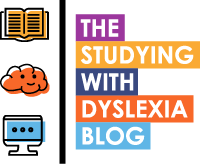You will be seeing in recent posts that I have been exploring the concept of how using comics as an educational tool is so effective.
I recently wrote about the illustrator Rossie Stone who used his own illustrations at school to teach himself school content. He found that the school way of teaching did not fit well with his own learning style, given that he was dyslexic, and so found that by drawing content he was able to learn more, revise effectively and get better grades at school.
So we have a a lovely story about a way to study that worked for one guy but is there any scientific basis to suggest that teaching educational concepts in a graphic way is going to be useful?
I decided to look more deeply into this subject and was pleased to find that there is a university lecturer at Sheffield Hallam University who is investing a lot of time into his own research in this area.
Professor Paul Aleixo BSc, PhD, FHEA, is a senior lecturer in Psychology at Sheffield Hallam University and recently wrote a paper about the link between illustration and education and
 |
| Prof Paul Aleixo, Sheffield Hallam University. |
YouTube, is a great example of this. There are millions of videos that have been uploaded to YouTube that are there to teach a concept such as how to play the guitar, or how to use software or communicating science in a fun way. YouTube is popular because people can learn things in their own time and often in a fun way. This makes learning attractive as the mechanism for learning is extremely visual.
In 2010, Paul Aleixo and Claire Norris published an article called the 'Comic Book Textbook' in Education and Health, Vol 28. Click here to see the article.
 |
| Book your place now. |
In their article, they state that in using cartoons alongside textual material is an effective way of enhancing levels of engagement and motivation. Whilst it is not necessarily useful for comprehension, it does make the process of learning more fun.
Surely, to be able to be able to comprehend information a good part of the preparation for that is to be able to be motivated to do so in the first place?
That said, in the case of a dyslexic student, they may well be motivated to read text materials in the hope that they will gain benefit but when they look at the materials they may then struggle to comprehend because of their dyslexia.
Other scientists argue the point about comics being used for comprehension by saying that in communicating educational concepts by using comics you are forced to make your information more concise and less confusing which opens up a clearer message which could be more 'digestible' for anyone struggling with comprehension.
In a study by Mallia (2007) a group of students (14 and 15 years old) were exposed to educational content focusing on Maltese history using illustrated text and text alone.
In the case of comprehension, the final result was similar for both styles of learning, but in the case of the illustrated text, for those that were exposed to it , they found that they enjoyed the studying so much more.
This study was criticised for it's methodology but it does suggest that illustrated texts make learning more enjoyable.
Other studies suggest that using illustrations for learning helps information to more effectively enter into memory. We can all probably cite an example of how we remembered something by using a picture associated with what we were remembering?
Suggestions in research seem to suggest that the use of graphics and colour will indeed help with motivation and engagement.
If we put all this into context with students with dyslexia, then if we are using graphics and colour to motivate and engage then we need to be mindful of issues associated with visual stress (Irlens). Illustrated text that is concise in nature may reinforce retainment of information because it spans a number of learning styles that are appropriate for dyslexic thinking whilst reducing the problems that are associated with processing or visual stress as much.
In reading this paper, it is clear that more research should be done on this topic as there is a marked absence of dyslexia based research in this area, however, it is my belief that if we are at least able to motivate dyslexic students to learn then they are more likely to be in a position to achieve positive outcomes versus those that may exclude themselves from the process.
Click below to find out more about how to make education more motivating for dyslexic learners.
 |
| Click here for this essential resource. |

